Urban architecture with Adrian Marmolejo
Material: watercolor
Number of paintings: 8
Course duration: 6 hours 30 minutes
Access: unlimited
What the course is about
The course covers essential concepts such as composition, perspective and depth, guiding you through the process of drawing architecture and incorporating urban elements like vehicles and figures.
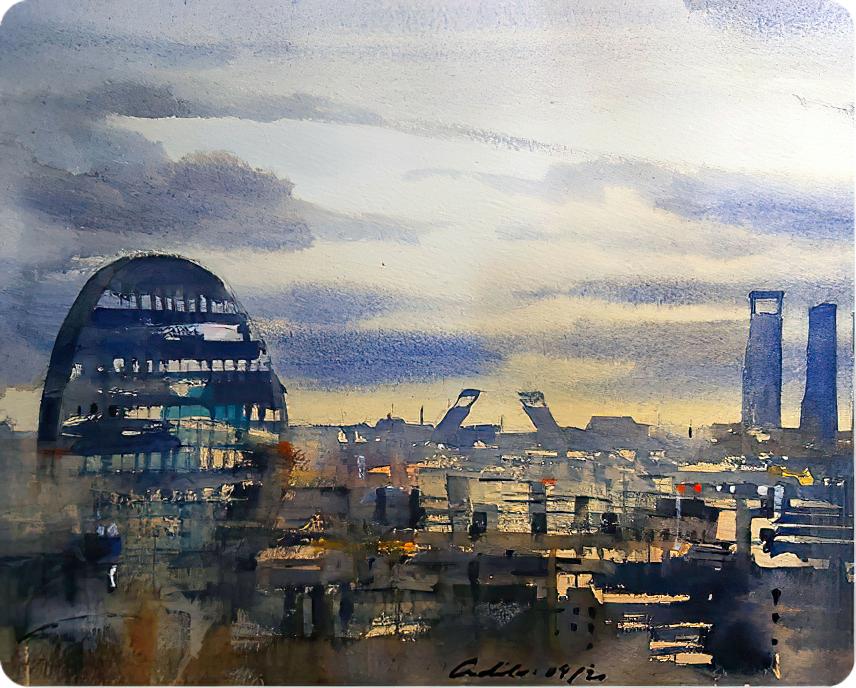
Over the span of 8 paintings, you will learn to master the art of capturing cityscapes and architectural details in watercolor.
You will explore various watercolor techniques — including washes, wet on wet, and drybrushing — which can help you to gain essential skills to create spontaneous and vibrant artworks.
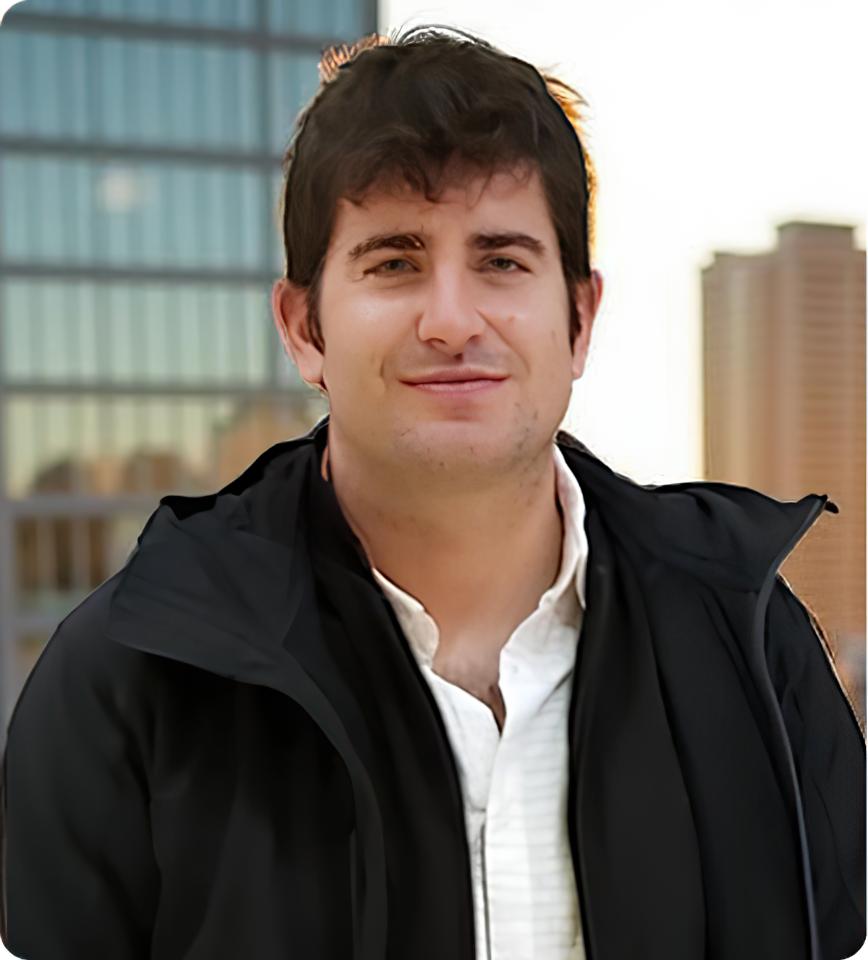
Who will find this course useful
This course is ideal for a wide range of individuals interested in enhancing their artistic skills. It is particularly beneficial for watercolor enthusiasts who are eager to master the art of painting cityscapes and architectural details.
Whether you are a beginner looking to learn the fundamentals or an intermediate artist aiming to refine your techniques, this course provides a structured approach to understanding composition, perspective, and depth in urban settings.
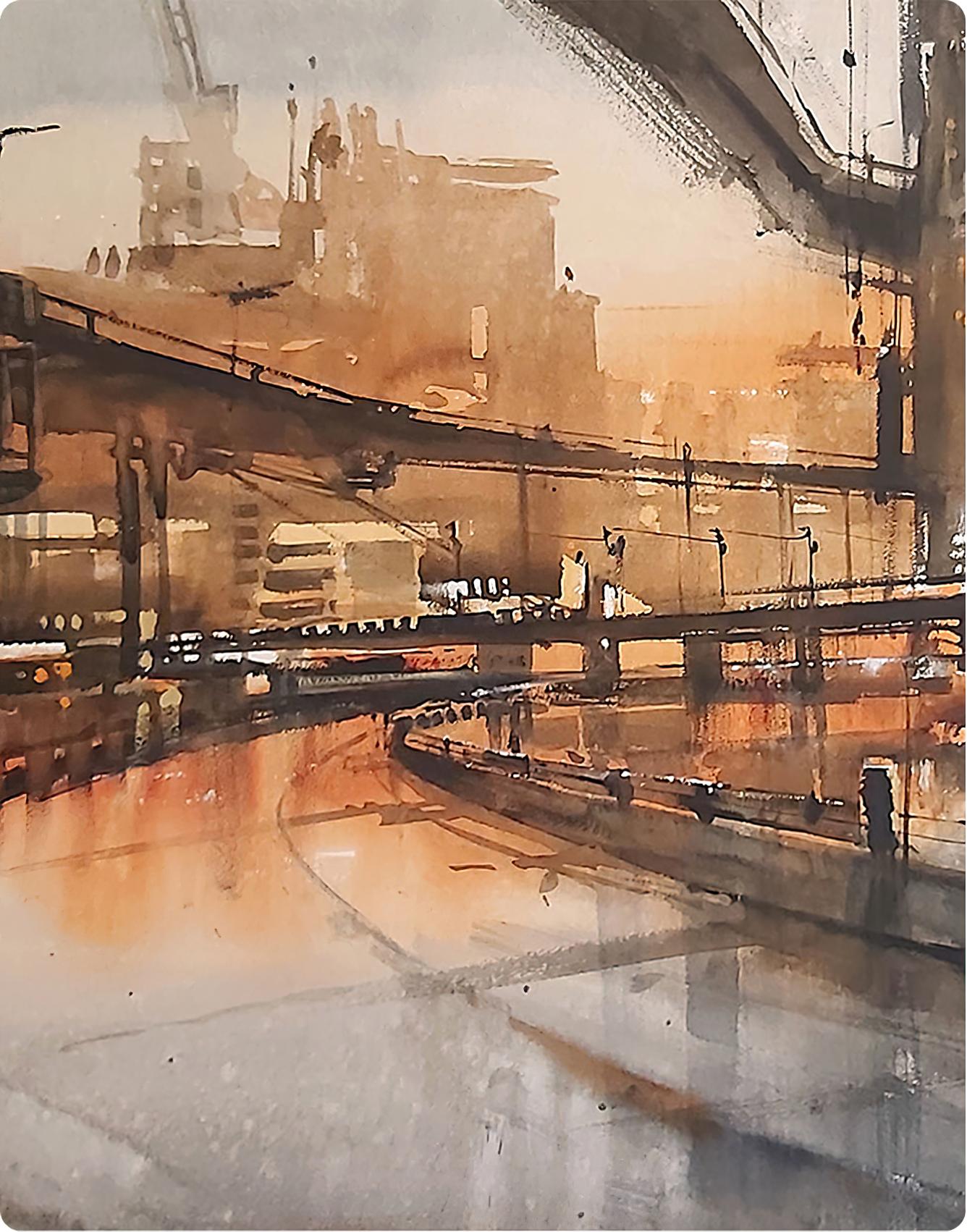
Course program
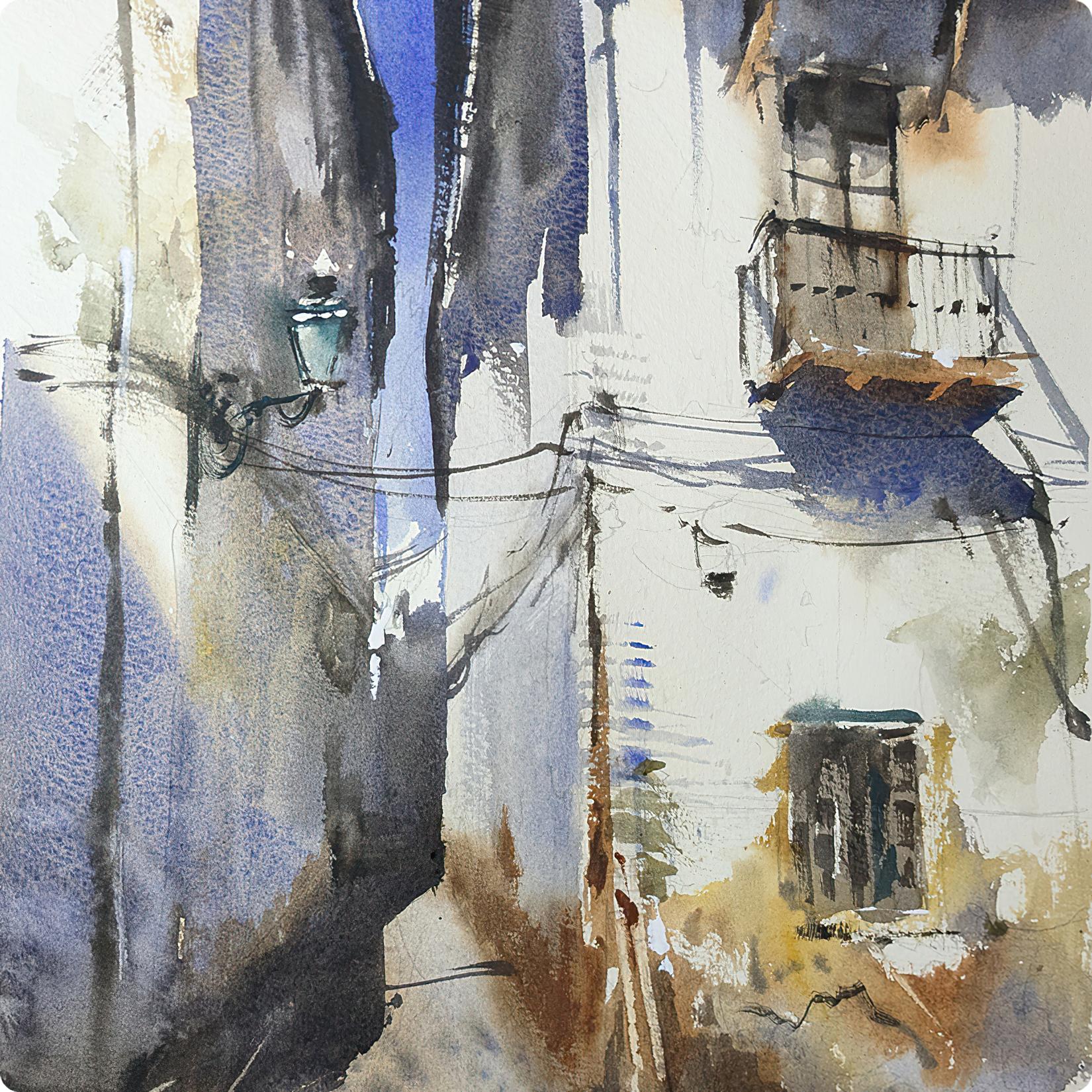
Lesson 3
«Andalusian corner»
Duration: 50 minutes
Our first painting will be a white andalusian corner in Spain, a scene full of shadows and light, with a limited palette.
You will learn to:
- simplifying shapes to maximize light sensation and connecting shapes;
- create perspective and depth;
- draw white architecture of Spain;
- employ a limited color scheme while varying tones.
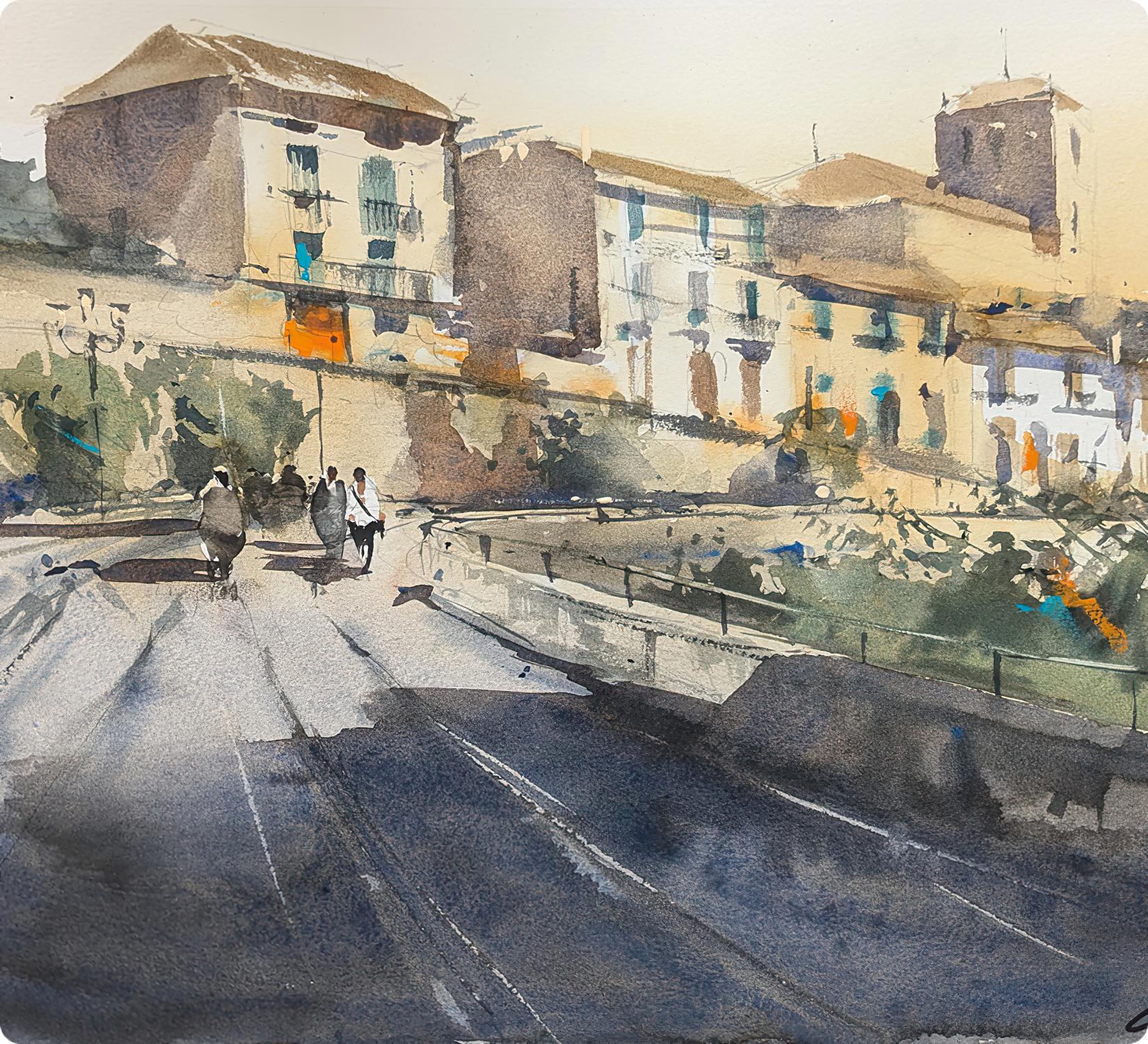
Lesson 5
«Sunny day in Granada»
Duration: 50 minutes
What a beautiful panoramic view! Let’s learn how to paint it with a limited warm palette.
You will learn to:
- draw curves in streets inside cityscapes;
- detail with opaque colours and dry brushing;
- apply wet on wet technique for vegetation and organic shapes.

Lesson 8
«Winter Spain»
Duration: 50 minutes
Today we are going to paint a winter scene and a panoramic view of the old part in Buitrago de Lozoya.
You will learn to:
- draw panoramic view;
- work with limited palette;
- apply wet on wet technique for snow, river and clouds;
- finish the painting with drybrush technique.
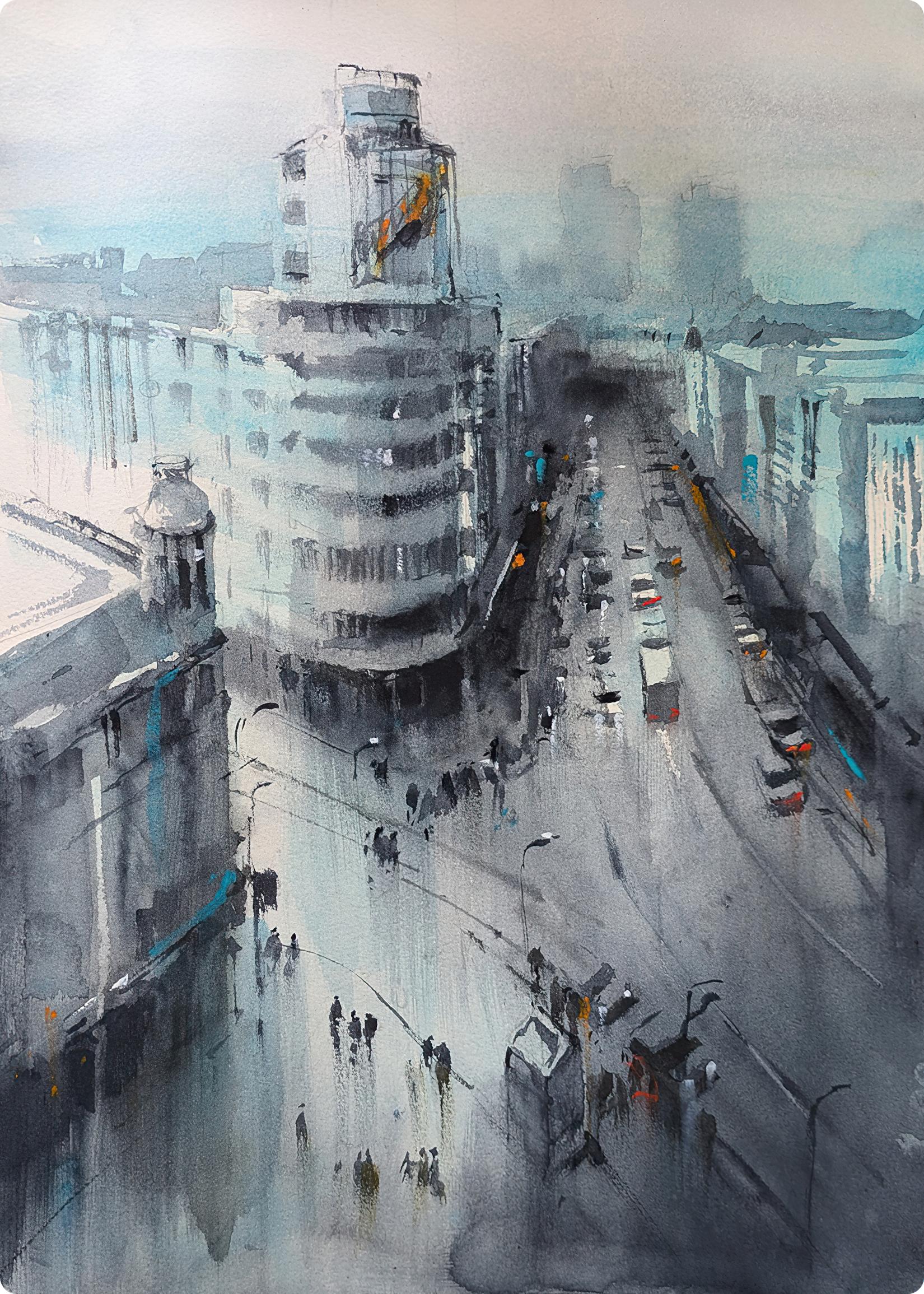
Lesson 9
«Madrid skyscraper»
Duration: 50 minutes
In this lesson we will learn how to depict an aerial perspective view and how to simplify a complex scene as a crowded avenue in a city.
You will learn to:
- create perspective and depth;
- draw cars, figures and movement;
- control tonal values;
- simplify and connect shapes in a complex cityscape.
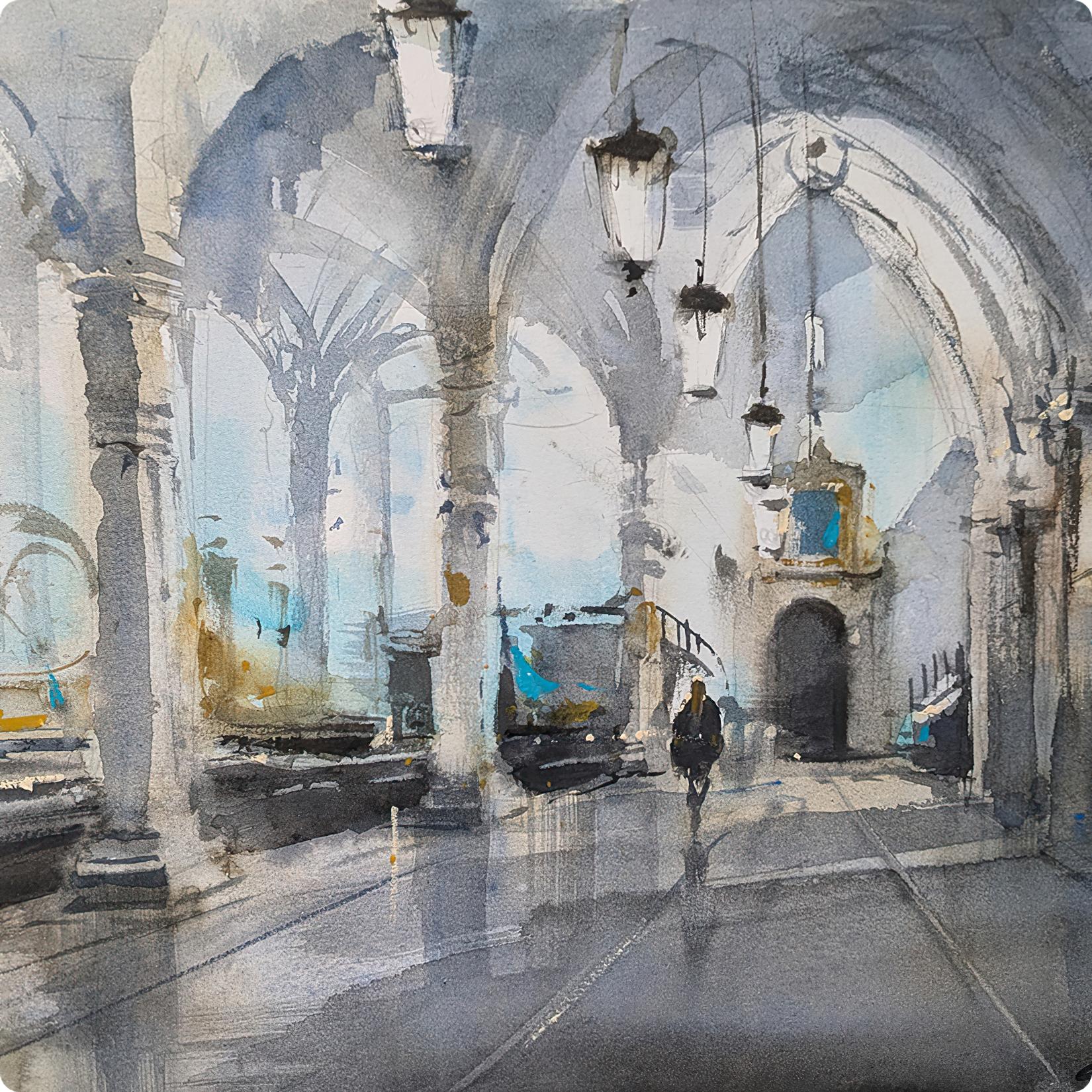
Lesson 11
«Las Palmas Cathedral»
Duration: 40 minutes
Let’s learn how to paint the interior of a religious building such as a cathedral.
You will learn to:
- detail the architecture;
- control tonal value;
- apply wet on wet technique for interior indirect lightning;
- glaze for adjusting interior light in watercolor;
- finish the painting with drybrush technique.
Adrian
MarmolejoWatercolor artist
 I’ve been teaching Watercolor since 2019;
I’ve been teaching Watercolor since 2019; I have a Master's degree in "Research and Production of Art";
I have a Master's degree in "Research and Production of Art"; Member of the Watercolorists Association of Granada and Andalusia;
Member of the Watercolorists Association of Granada and Andalusia;
 My paintings has been published in international magazines such as "The Art of Watercolor" and selected twice for the "Fabriano in Acquarello" festival.
My paintings has been published in international magazines such as "The Art of Watercolor" and selected twice for the "Fabriano in Acquarello" festival.
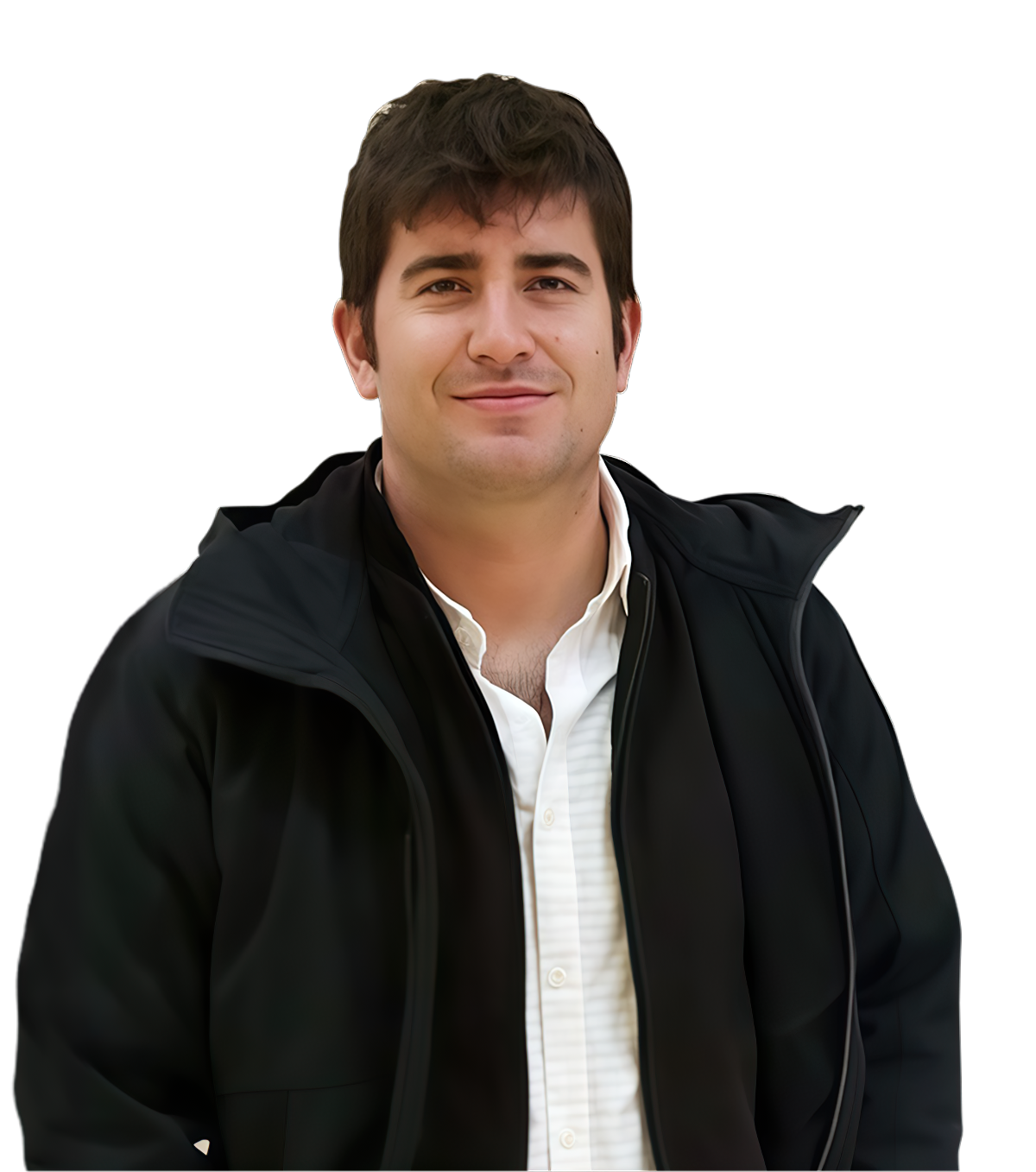
InstructorsWorks
Teachersworks
Course materials
Paper:
- Arches 300 gsm rough imperial size paper (22x30 inches). You can of course use other branches without a doubt, but this one will be used for the course. The whole sheet will be divided into 2 or 4 pieces to paint, giving and area of 56x38 cms or 28x38 cms approximately. You can also use blocks of similar size or slightly bigger depending on how comfortable you feel (up to half a sheets is ok).
Mops and brushes:
- Smooth medium mop brush as a Petit Gris for big washes. I use a Da Vinci Cosmotop no16 and 10;
- A synthetic brush as an Escoda Perla number 14 and 8;
- Squared brushes SoftAqua of Raphael of 40 and 20 mm for architectural features.
Watercolor palette:
- Metallic ones work better and keep color smooth longer, it is preferable that they include big mixing zones. I use a TALENS branch palette with two big mixing areas, one for cool and another for warm tones. ARTIST also sells a very similar one.
Watercolors (in tube):
- Main palette will be composed of: French Ultramarine blue, Cobalt Blue, Burnt Sienna, Raw Sienna, Yellow Ochre, and Van Dyck Brown. These colors will be from Rembrandt. Other brands are perfectly ok;
- Secondary palette, also from Rembrandt: Neutral Tint, Payne’s Gray, Turquoise Blue, Alizarin Crimson, Titanium White (Opaque White);
- From Winsor & Newton I use Cadmium Orange, Cobalt Turquoise Light and Transparent Orange.
Other materials:
- HB (medium hard) pencil or mechanical pencil of 2mm width;
- A soft white eraser. A very good option is the MONO eraser of Tombow;
- Masking tape;
- Water recipient;
- Water sprayer.
Plans

- 13 lessons: theory + practice + developmental exercises
- 8 architectural compositions
- Machine translated subtitles: English, German, French, Italian, Spanish, Greek, Polish, Portuguese, Hungarian, Chinese, Indonesian
- Course Unfreeze
- The opportunity to watch the analysis of other participants' artworks
- Access to course materials without time limits
- Review of your artworks and answers to questions in the comments for 60 days from the start of the course
- Personal one-hour online consultation with a course expert
- +20 bonus dollars! Can be used when purchasing a course at the next marathon. Valid for 3 months

- 13 lessons: theory + practice + developmental exercises
- 8 architectural compositions
- Machine translated subtitles: English, German, French, Italian, Spanish, Greek, Polish, Portuguese, Hungarian, Chinese, Indonesian
- Course Unfreeze
- The opportunity to watch the analysis of other participants' artworks
- Access to course materials without time limits
- Review of your artworks and answers to questions in the comments for 60 days from the start of the course
- Personal one-hour online consultation with a course expert
- +20 bonus dollars! Can be used when purchasing a course at the next marathon. Valid for 3 months

- 13 lessons: theory + practice + developmental exercises
- 8 architectural compositions
- Machine translated subtitles: English, German, French, Italian, Spanish, Greek, Polish, Portuguese, Hungarian, Chinese, Indonesian
- Course Unfreeze
- The opportunity to watch the analysis of other participants' artworks
- Access to course materials without time limits
- Review of your artworks and answers to questions in the comments for 60 days from the start of the course
- Personal one-hour online consultation with a course expert
- +20 bonus dollars! Can be used when purchasing a course at the next marathon. Valid for 3 months
FREQUENTLY ASKED QUESTIONS
- I can't draw at all. Should I take the course?
-
Of course you should! The course is designed so that it starts with simple paintings and then progresses to more complex ones, allowing you to smoothly integrate into the process and achieve high results!
The course will also be beneficial for experienced artists. You will further refine your technique and enhance your visual understanding.
- How is the feedback organized?
-
At the end of the lesson, you will upload a photo of your work. The teacher will have the opportunity to leave textual, graphic (annotations on the drawing), as well as audio comments on your work.
At the bottom of each lesson, there will be a comment section where you can ask any questions related to the learning process.
- How long will the training take?
-
If you have a plan without feedback, it will depend on your personal pace at which you complete the lessons.
With plans that include feedback, we actively conduct lessons for two months from the moment you "unfreeze" the course.
Overall, I recommend taking the course at a relaxed pace. Enjoy the process more!
- I am 67 years old, will I be able to learn to draw such illustrations in the course?
-
It's never too late to learn to draw. In our school, 30% of students are over 50 years old. They enjoy drawing, developing their skills, creative thinking, and rejuvenating their spirit and mind!
Feedback
Didn't find the answer to your question? Message us on WhatsApp or Telegram.





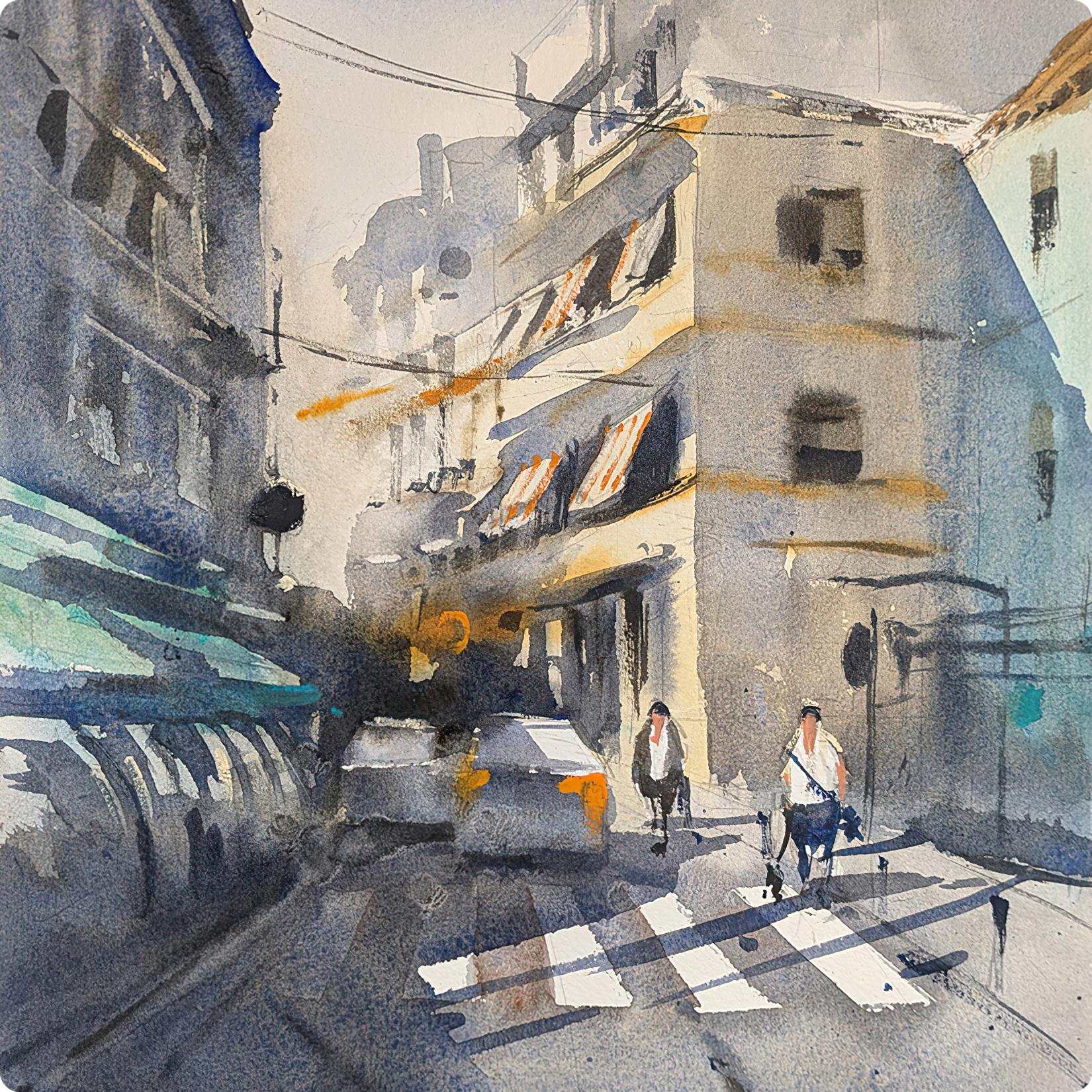
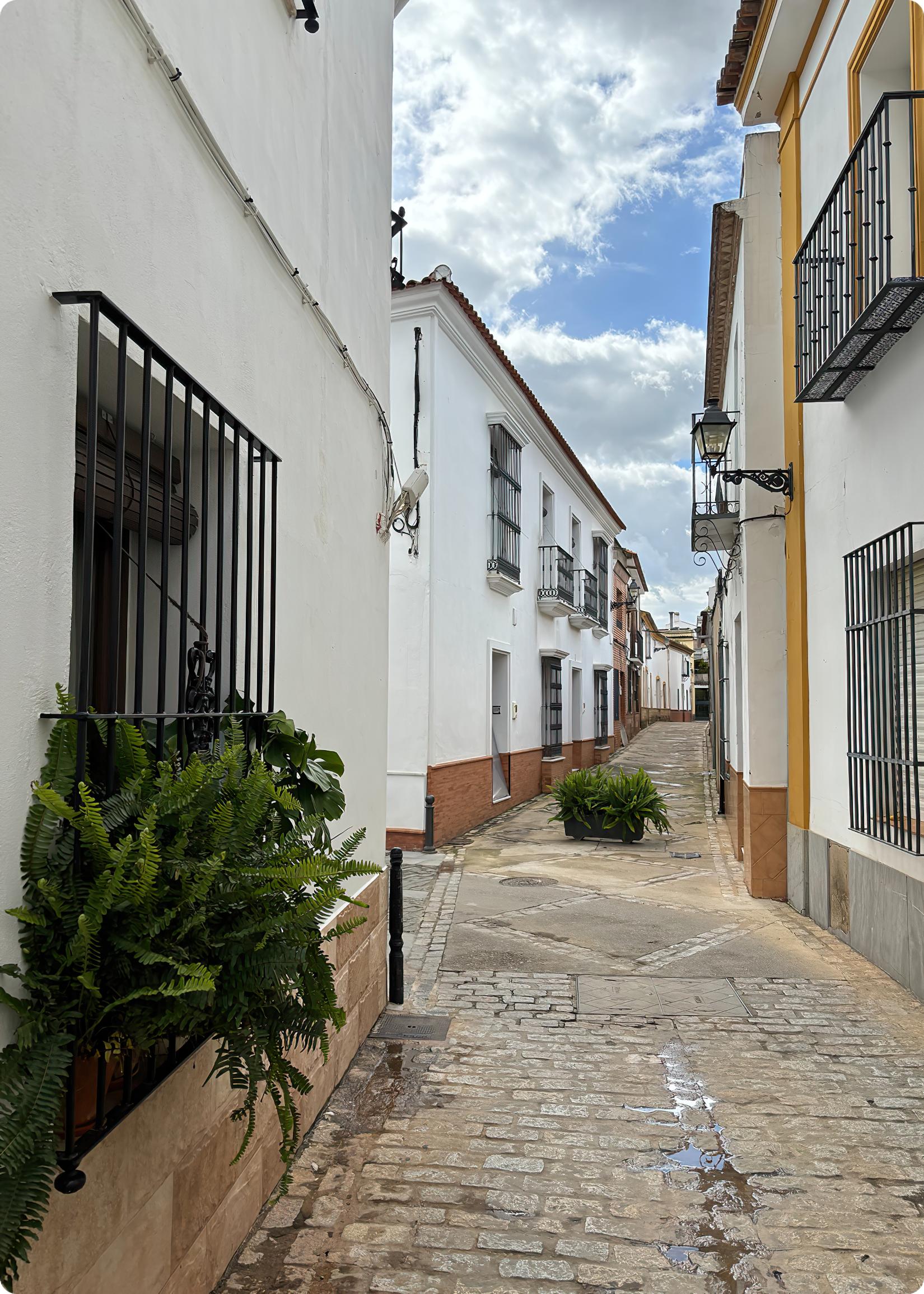
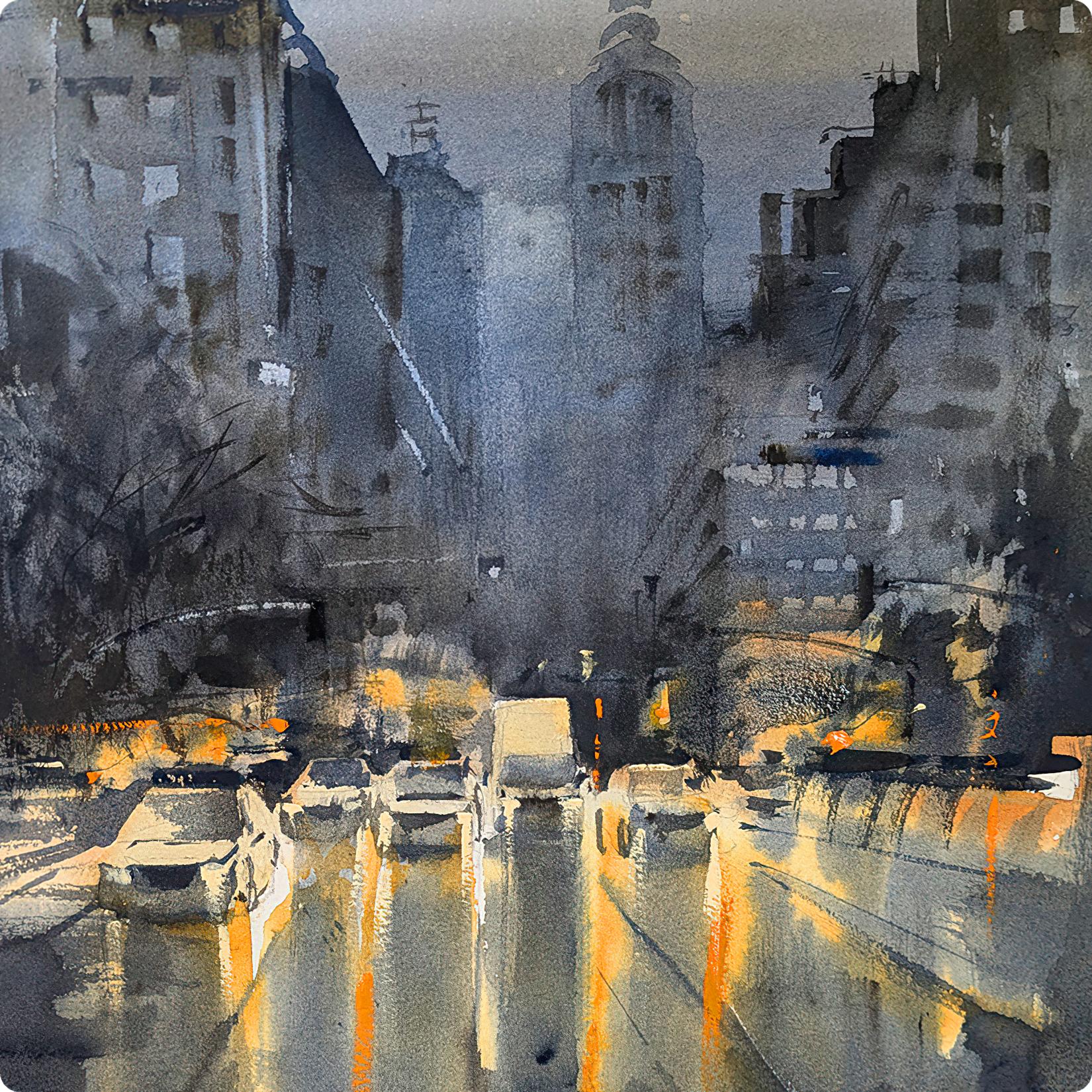
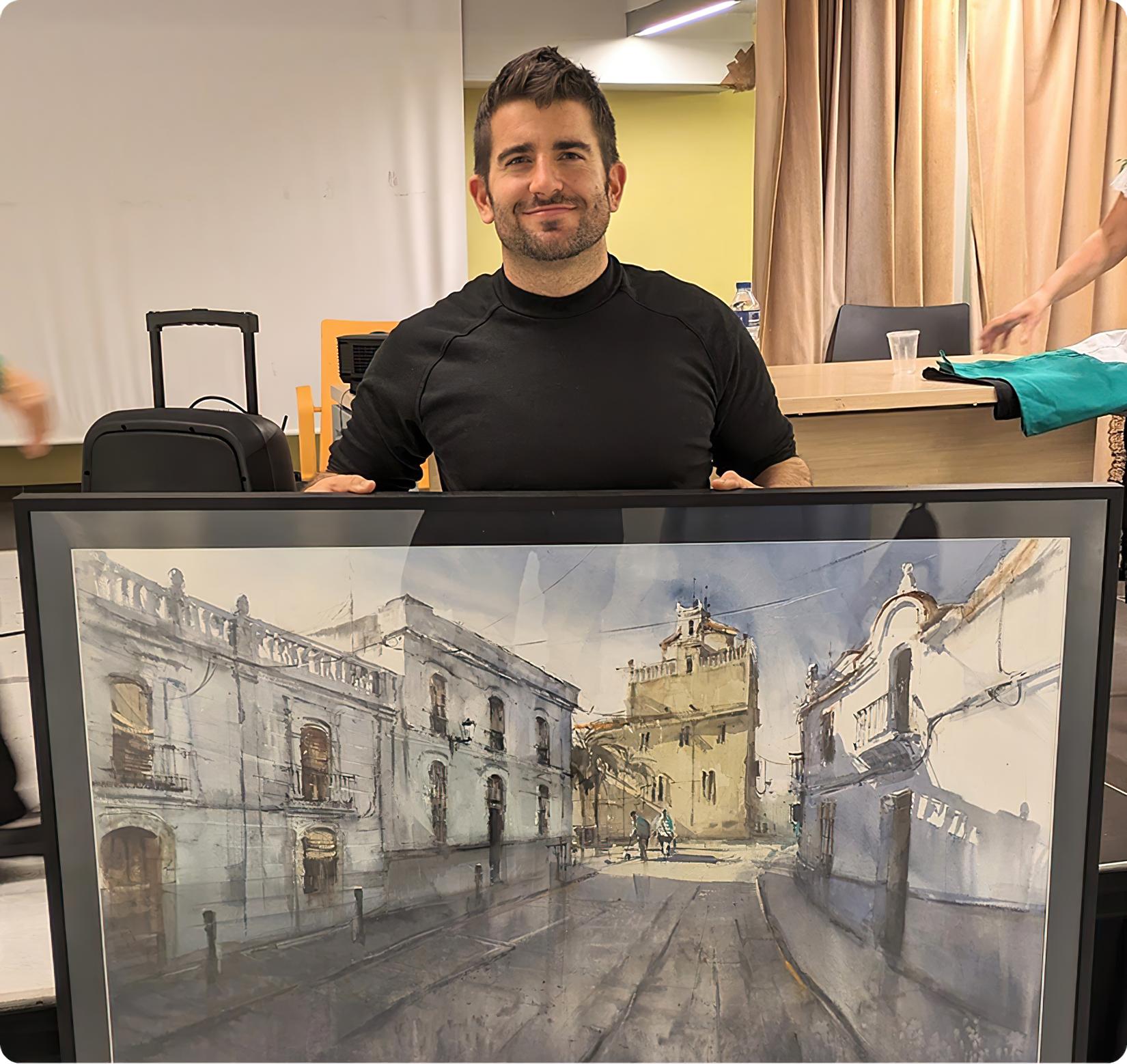




 Telegram
Telegram
 WhatsApp
WhatsApp